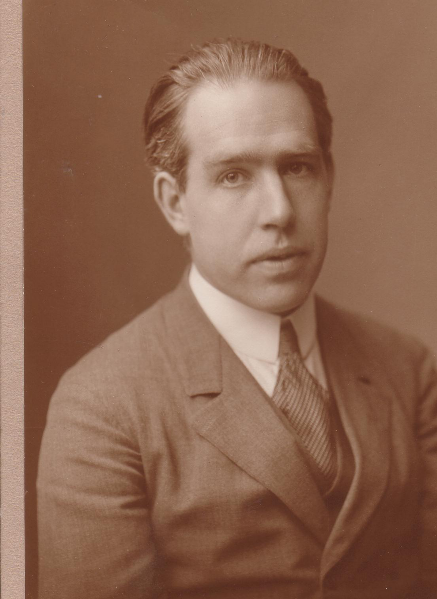Meccaof atom research. In discussions with countless students, he develops the foundations for quantum mechanics. In 1927 he formulates the principle of complementarity, leading to a long-standing and fundamental dispute with Einstein. In 1939 Bohr works on the theoretical foundations of nuclear fission. Starting in 1933 he helps many scientists who have emigrated from Germany, however he is forced to emigrate himself in 1943. After the war, he returns to his institute.
Quantentheorie: EPR-Paradoxon
Niels Bohr (1885–1962)

Niels Bohr is son of a Danish patrician family. He studies physics in Copenhagen and receives his doctorate in 1911. During semesters abroad in Cambridge and Manchester, Bohr receives decisive input from Rutherford, leading to his theoretical quantum model of the atom in 1913 for which he receives the Nobel Prize for Physics in 1922. In 1916 Bohr is appointed professor in Copenhagen; a chair for theoretical physics is created especially for him in 1920 and, one year later an entire institute is built, soon becoming the
[ Sitemap ]
[ info ] This website was created by the MPI for the History of Science.
 Scene
Scene


 1st Slide
1st Slide
 Branching Point
Branching Point
 Module: Quantentheorie: EPR-Paradoxon
Module: Quantentheorie: EPR-Paradoxon Sequence: 0.0. Start_Quantentheorie_EPR
Sequence: 0.0. Start_Quantentheorie_EPR Branching Point: Paradoxes of Quantum Mechanics
Branching Point: Paradoxes of Quantum Mechanics Slide: The Layout of the Experiment
Slide: The Layout of the Experiment
